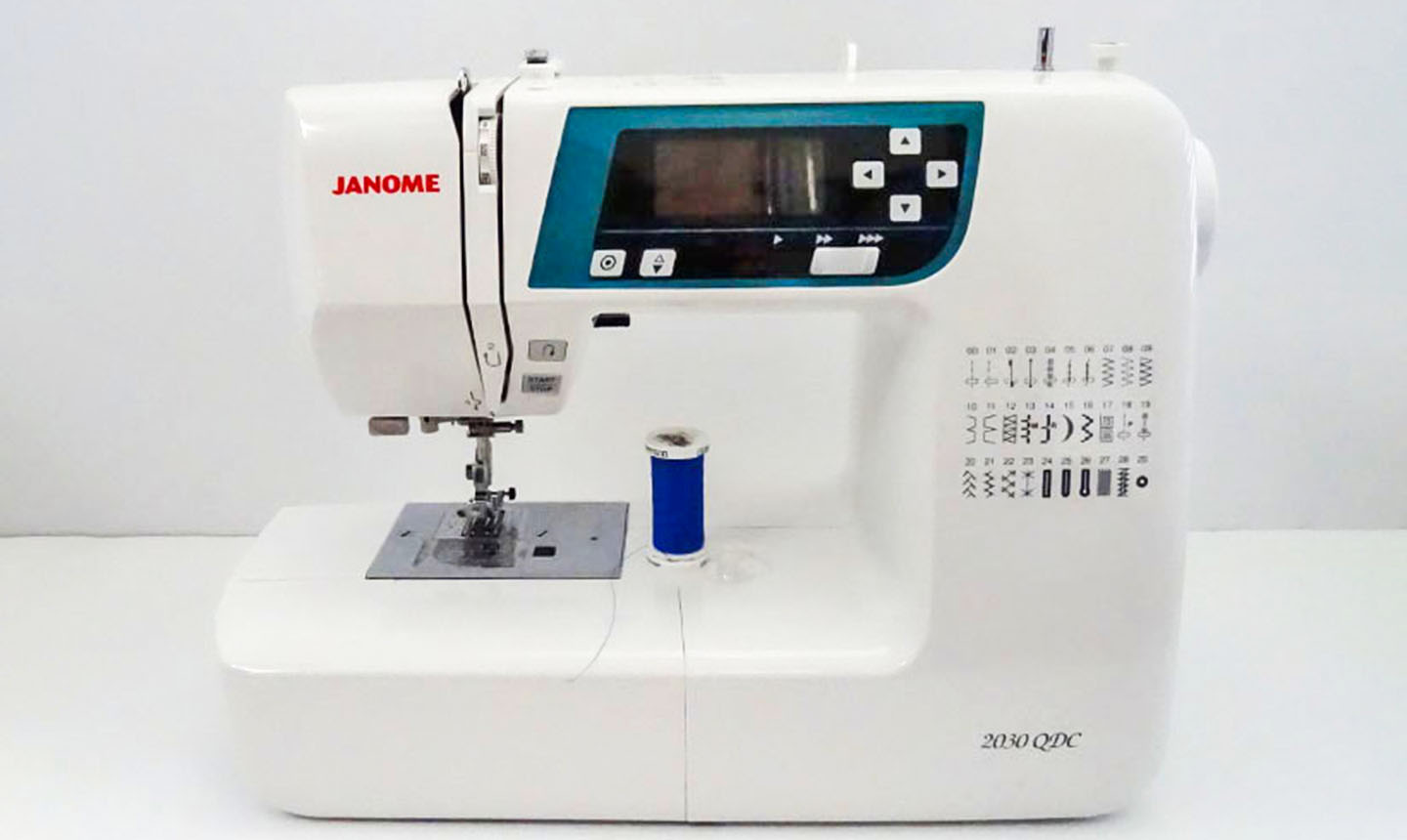Janome New Home 656a Sewing Machine Feed Dog Not Working

Learning your way around a sewing machine can take time, and even experienced sewers can have a few technical blunders. Here are some of the most common issues sewers can run into on their Janome machine, and how to fix them so you can get back to your project ASAP.
Good to Know: Most of these problems and solutions are applicable to all brands of machines, so even if you don't have a Janome these may help.
Problem 1: There Are Three Threads at the Presser Foot
If you're seeing three threads at the presser foot instead of two, your machine is still in the middle of a stitch and the "third" thread is not actually a third thread at all — it's the bobbin and needle threads looping, trying to form a stitch that you've interrupted.
Solution: Check the take-up lever (the metal hook that moves up and down at the top of the machine directly above the presser foot area) is in the highest position, then lift your presser foot. Raise the take-up lever manually by turning your handwheel toward you and "finishing" the stitch. Your fabric and threads should pull out of the machine with ease now, as you are at the end of a stitch cycle.
Problem 2: The Fabric Isn't Moving
Most of the time, when your fabric isn't moving it's because you're trying to sew with the presser foot still in the upright position. The feed dogs can't pull the fabric through the machine without the foot down on top of them. When they try, it causes the machine to make a loud sound and the thread jams around the fabric, making a big mess.
Solution A: Simply unclog the jam, remove any excess threads on the fabric and inside the machine, then start again.
If your fabric isn't moving and the machine is making the normal sewing-like sounds, check to see if the machine is threaded correctly. If it's threaded correctly (and the presser foot is down on top of the feed dogs), it's likely your machine is set to the "free-motion" or "darning" set, which disables the feed dogs.
Solution B: Refer to your manual for instructions on how to change the machine back to regular sewing, which will engage the feed dogs so they can pull the fabric through the machine properly.
Problem 3: The Machine Comes Unthreaded
This happens all the time with new sewers, and it could be because of a few different issues. For starters, your threads could be too short, or they weren't under the presser foot upon starting to sew. This would allow the thread to be pulled out of the needle as the machine sews.
Solution A: Make sure the threads from the bobbin and the eye of the needle are 3-4″ long, under the presser foot and hanging back behind the machine.
Another reason this could be happening is because you finished your sewing mid-stitch and the take-up lever is not in the highest (finished) position. When that happens, the machine tries to finish the stitch when you start sewing, sometimes unthreading the needle because it's in the middle of the stitch's cycle.
Solution B: When you finish sewing, before you pick up your presser foot to pull out your project, always check to make sure your take-up lever is in the top position. If it isn't, turn the handwheel toward you and finish the stitch until the take-up lever is as high as it will go. Then pick up the presser foot and pull your project from the machine.
Problem 4: You Have Loose and Loopy Stitches
A probable culprit: the thread has fallen out of the take-up lever, which can happen if the machine is jammed.
Solution A: Check if the machine is threaded properly, both into the tension discs and the take-up lever. If not, re-thread the machine properly and try again.
Your bobbin tension could also be off and causing this problem. If the thread from the bobbin isn't going into the tension area on the bobbin casing or in the drop-in bobbin tension area, then loose and loopy stitches can happen.
Solution B: Rethread the bobbin, making sure the thread is properly inserted into the tension areas.
A third spot to check is to see if your tension discs are on to the wrong setting on the machine.
Solution C: The tension dial on the machine should be set to the middle "automatic" setting on the machine. Refer to your manual for the suggested setting if you're unsure what the automatic setting is.
Problem 5: The Thread Is Really Tight
This can be a pesky problem because it can create an uneven stitch. It's likely that when threading your machine, you accidentally threaded the spool through the bobbin winding tension at the top of the machine.
Solution A: Double-check that your machine is threaded properly. If everything's correct and you're still having these issues, try the troubleshoot below.
The other possible issue is that the tension is set incorrectly. Most of the time the machine sews best on the "automatic" setting, but many new sewers think they need to move this dial a lot. The reality is you can totally leave it alone on this basic setting.
Solution B: Refer to your manual for instructions on how to set the tension at the "automatic" setting, then try the stitch again.
Problem 6: Your Machine Is Skipping Stitches
If this is happening — and resulting in an uneven-looking stitch — your needle may be dull.
Solution: Put in a new, sharp needle. As always, make sure the needle is the correct type and size for your fabric.
Source: https://www.craftsy.com/post/how-do-i-fix-my-sewing-machine/
0 Response to "Janome New Home 656a Sewing Machine Feed Dog Not Working"
Post a Comment